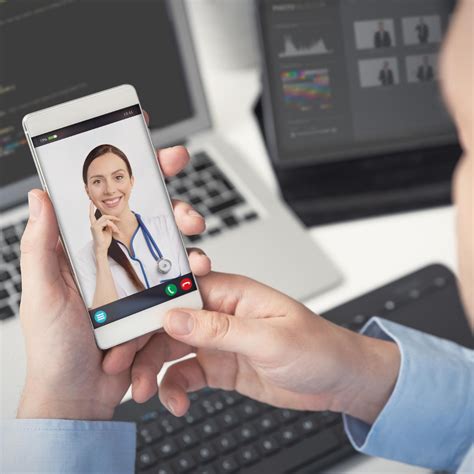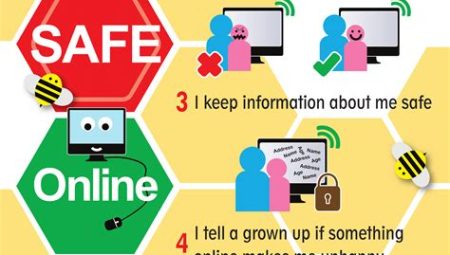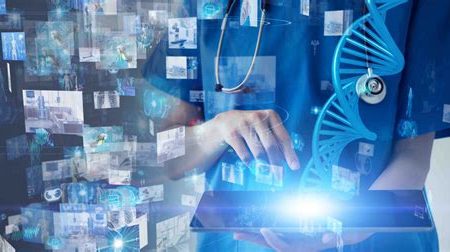In the ever-evolving landscape of healthcare, technological advancements have revolutionized the way we approach and deliver medical care. From wearable devices to artificial intelligence, the possibilities seem endless in reimagining the future of healthcare. In this blog post, we will explore the power of health technologies and their impact on the industry. We’ll discuss the latest advancements in wearable devices, remote monitoring for improved care, telehealth, artificial intelligence, IoT, virtual reality, health apps, robotics, and data analytics. These innovations have the potential to empower both patients and healthcare professionals, ultimately improving the quality of care and the overall patient experience. Join us as we delve into the exciting world of health technologies and discover the endless possibilities they bring to the table. Individually or collectively, these technologies have the potential to transform the way we approach and deliver healthcare.
Table of Contents
Introduction to Health Technologies
Health technologies have revolutionized the way we approach healthcare, bringing about significant advancements in the diagnosis, treatment, and management of diseases. These technological innovations have paved the way for improved patient outcomes, streamlined processes, and enhanced overall healthcare delivery.
From the development of wearable devices and remote monitoring systems to the integration of IoT and artificial intelligence in healthcare, the landscape of modern medicine is constantly evolving with the introduction of cutting-edge technologies.
As these health technologies continue to play a pivotal role in reshaping the healthcare industry, it is essential for healthcare professionals, patients, and caregivers to stay informed and adapt to these changes to ensure the best possible outcomes for all involved.
Through this blog post series, we will delve into the various health technologies that are transforming the way we approach healthcare, exploring the benefits, challenges, and future implications of these innovative solutions.
Advancements in Wearable Devices
Wearable devices have come a long way in recent years, with advancements that have revolutionized the way we monitor and track our health. These devices, which are worn on the body, can now do much more than simply count steps or track heart rate. The technological innovations in wearable devices have enabled them to provide real-time data on a wide range of health metrics, from blood sugar levels to sleep patterns.
One of the most exciting advancements in wearable devices is the integration of advanced sensors and machine learning algorithms, allowing for more accurate and personalized health monitoring. These devices can now detect early signs of potential health problems and provide actionable insights to help users take control of their health. Additionally, the integration of wearable devices with smartphone apps and other connected technologies has made it easier than ever for individuals to access and understand their health data.
Furthermore, the development of more comfortable and aesthetically appealing wearable devices has increased their adoption among different age groups. This has led to a shift in the perception of wearable devices from being purely functional to being fashionable accessories that also provide valuable health insights.
Overall, the advancements in wearable devices have opened up new possibilities for proactive and personalized healthcare, empowering individuals to better manage their well-being and leading to a more data-driven approach to health management.
Remote Monitoring for Improved Care
Remote monitoring in healthcare has revolutionized the way patients receive care, providing a more efficient and accurate way to track and manage their health conditions. Through the use of wearable devices and IoT technology, patients can now be monitored remotely, allowing healthcare providers to keep a close eye on their progress and intervene proactively when necessary.
This advancement in healthcare technology has not only improved the quality of care, but also increased patient satisfaction by providing a convenient and non-intrusive way of monitoring their health. Patients are no longer required to make frequent trips to the hospital or doctor’s office for routine check-ups, as their vital signs and health data can now be monitored from the comfort of their own homes.
Remote monitoring has also proven to be particularly beneficial for patients with chronic conditions, allowing healthcare providers to detect any potential worsening of their condition early on, and adjust their treatment plans accordingly. This has led to a significant reduction in hospital readmissions and emergency room visits, ultimately resulting in better overall care and reduced healthcare costs.
Overall, remote monitoring has truly transformed the way healthcare is delivered, providing a more personalized and proactive approach to patient care, and allowing individuals to take an active role in managing their own health.
Telehealth: Redefining Doctor-Patient Interactions
Telehealth is revolutionizing the way that doctors and patients interact, breaking down barriers of distance and accessibility. With the use of telecommunication and information technology, healthcare professionals are able to provide medical services remotely, improving access to care for patients in rural or under-served areas.
Through video calls, phone consultations, and secure messaging platforms, doctors can now offer diagnosis, treatment, and ongoing care without the need for in-person visits. This has not only increased convenience for patients, but also decreased the burden on healthcare facilities, allowing them to better prioritize cases that require in-person attention.
Telehealth has also enabled greater collaboration between healthcare providers and specialists, resulting in more comprehensive and integrated care plans for patients. With the ability to easily share medical records, test results, and images, doctors can work together more efficiently, leading to improved patient outcomes.
As technology continues to advance, the potential for telehealth in redefining doctor-patient interactions is endless. From remote monitoring of vital signs to virtual reality simulations for patient education, the possibilities for enhancing the delivery of care are constantly expanding.
Artificial Intelligence in Healthcare
Artificial Intelligence (AI) has been revolutionizing the healthcare industry in recent years, and its impact continues to grow. One of the key areas where AI is making a significant difference is in improving patient care and treatment outcomes. Through the use of AI-powered algorithms, healthcare providers are able to analyze large volumes of data and identify patterns that can lead to early detection of diseases and personalized treatment plans.
Moreover, AI is also being utilized in medical imaging to help radiologists identify abnormalities more accurately and efficiently. With the assistance of AI, healthcare professionals are able to detect potential health issues in their patients at an earlier stage, ultimately improving the chances of successful treatment.
Another area where AI is making a profound impact is in drug discovery and development. By utilizing AI algorithms to sift through extensive databases of chemical compounds and genetic information, researchers are able to identify potential new drug candidates and predict their efficacy with greater accuracy. This has the potential to significantly accelerate the drug development process and bring new treatments to patients more quickly.
In addition to these applications, AI is also being used to streamline administrative processes within healthcare organizations, such as automating appointment scheduling, billing, and coding. By automating these tasks, healthcare providers are able to allocate more time and resources to patient care, ultimately improving the overall quality and efficiency of the healthcare system.
IoT in Healthcare: Connecting Devices and Data
Advancements in technology have revolutionized the healthcare industry, and one of the most significant developments is the use of IoT in healthcare. IoT, or the Internet of Things, refers to the network of interconnected devices that can communicate and share data with each other. In the context of healthcare, IoT is playing a crucial role in connecting various medical devices and data sources to improve patient outcomes and streamline healthcare processes.
The use of IoT in healthcare enables the seamless connection of medical devices such as wearable fitness trackers, smart infusion pumps, and remote patient monitoring systems. These devices can collect real-time data about a patient’s health status and transmit it to healthcare providers, allowing for timely interventions and more personalized care.
Furthermore, IoT technology in healthcare also facilitates the integration of electronic health records (EHRs), medical imaging systems, and other health information systems. This interconnected network of data sources enables healthcare professionals to access comprehensive patient information, make informed decisions, and coordinate care more effectively.
Overall, the integration of IoT in healthcare is a game-changer, as it enables the seamless connection of devices and data sources, paving the way for improved patient care, enhanced efficiency, and better outcomes.
Virtual Reality for Enhanced Medical Training
Virtual reality (VR) has emerged as an innovative tool for improving medical training and education, allowing healthcare professionals to practice surgical procedures and medical simulations in a simulated environment. The use of VR in medical training provides a realistic and immersive experience, enabling trainees to learn and refine their skills in a safe and controlled setting.
One of the key advantages of VR in medical training is its ability to replicate complex surgical scenarios, allowing trainees to practice intricate procedures without the need for cadavers or live patients. This not only enhances the learning experience but also reduces the potential risks associated with traditional training methods.
In addition, VR technology offers interactive and customizable training modules, allowing trainees to receive real-time feedback and guidance, leading to improved skill development and competency. With VR, medical professionals can also experience rare or challenging cases that may not be readily available in traditional training settings, further enhancing their exposure to a wide range of medical scenarios.
Furthermore, VR-based medical training programs are increasingly being integrated into medical schools and residency programs, providing students and trainees with hands-on experience in a dynamic and engaging manner. As the technology continues to advance, VR holds the potential to revolutionize medical education and training, ultimately leading to better-prepared and more skilled healthcare professionals.
Empowering Patients with Health Apps
Health apps have revolutionized the way patients take control of their own health. With the rise of smartphone usage, health apps have become increasingly popular in empowering patients to manage and monitor their own well-being.
Patients can now easily track their daily activities, such as exercise routines, sleeping patterns, and dietary habits, using health apps that provide personalized insights and recommendations for a healthier lifestyle.
Additionally, health apps allow patients to access their medical records, schedule appointments, and communicate with healthcare providers, all from the convenience of their smartphones. This level of accessibility and convenience is truly empowering for patients, enabling them to take a more proactive role in their healthcare.
Furthermore, the use of health apps has contributed to an increase in patient engagement and adherence to treatment plans. By providing patients with the tools and resources to monitor their own health, these apps have the potential to improve overall health outcomes and reduce healthcare costs.
The Role of Robotics in Healthcare
The use of robotics in the healthcare industry has been steadily increasing over the years, revolutionizing the way medical procedures are performed and patient care is delivered. Robotics technology has made significant advancements in surgical procedures, rehabilitation, and patient assistance, offering a range of benefits to both healthcare providers and patients.
One of the key roles of robotics in healthcare is in surgical operations. Robotic-assisted surgery has enabled surgeons to perform complex procedures with enhanced precision and control, leading to fewer complications, shorter hospital stays, and faster recovery times for patients. This technology has transformed the way surgeries are conducted, making it safer and more efficient.
In addition to surgical applications, robotics plays a crucial role in rehabilitation therapy. Robotic devices are used to assist patients in regaining mobility and strength after an injury or illness. These devices offer personalized and intensive therapy, helping patients achieve better outcomes and improving their overall quality of life.
Furthermore, robotics has the potential to revolutionize patient care by providing assistance in daily activities and monitoring vital signs. This can alleviate the strain on healthcare professionals and improve the overall patient experience, especially for those with chronic conditions or disabilities.
Data Analytics: Unlocking Insights for Better Healthcare
In the constantly evolving world of healthcare, data analytics has emerged as a powerful tool for unlocking valuable insights that can improve patient care and outcomes. Through the effective collection, analysis, and interpretation of data, healthcare providers are able to make more informed decisions and identify trends that can lead to better strategies for treatment and prevention.
One of the key benefits of data analytics in healthcare is its ability to identify patterns and correlations that may not be immediately obvious. By examining large sets of data, healthcare professionals can gain a deeper understanding of patient populations, disease trends, and the effectiveness of different treatment approaches.
Additionally, data analytics can play a crucial role in identifying inefficiencies in the healthcare system, leading to cost savings and improved resource allocation. By analyzing data on patient outcomes, hospital operations, and resource utilization, healthcare organizations can streamline processes and enhance the overall quality of care.
Overall, data analytics holds tremendous potential for revolutionizing healthcare, paving the way for more personalized, effective, and efficient approaches to patient care.






